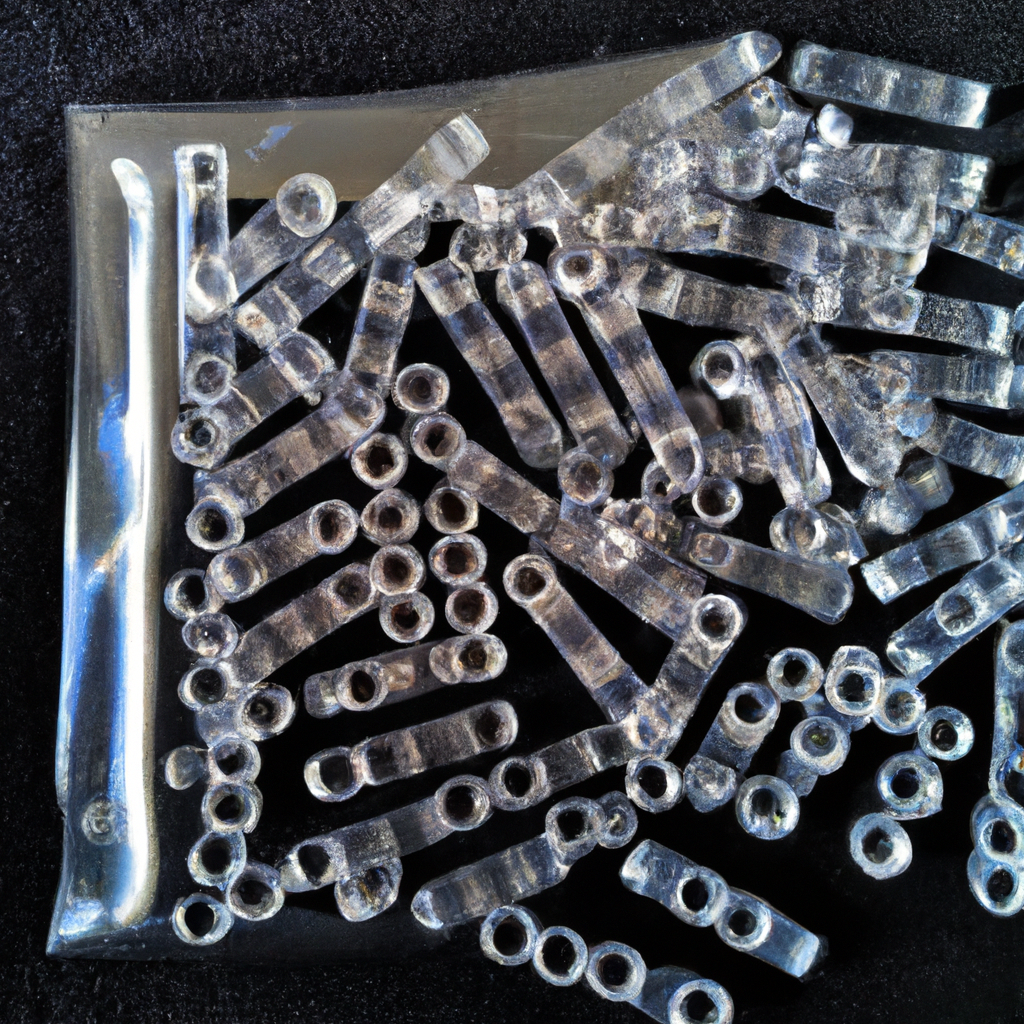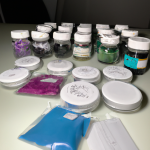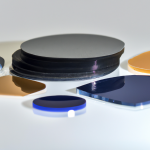-
Table of Contents
“Unleash Durability: Heat-Resistant Resin Solutions for High-Performance Functional Parts.”
Heat-resistant resins are specialized materials designed to withstand elevated temperatures while maintaining their structural integrity and performance characteristics. These resins are essential for applications in industries such as aerospace, automotive, electronics, and manufacturing, where components are exposed to high thermal environments. Various types of heat-resistant resins, including epoxy, polyimide, and silicone-based formulations, offer unique properties such as high thermal stability, chemical resistance, and mechanical strength. Selecting the appropriate heat-resistant resin is crucial for ensuring the reliability and longevity of functional parts in demanding applications. This introduction explores the different options available, their specific advantages, and considerations for choosing the right resin for heat-sensitive applications.
Heat-Resistant Resin Types for High-Temperature Applications
In the realm of high-temperature applications, the selection of appropriate materials is crucial for ensuring the performance and longevity of functional parts. Among the various options available, heat-resistant resins have emerged as a preferred choice due to their exceptional thermal stability and mechanical properties. These resins are specifically engineered to withstand elevated temperatures, making them suitable for industries such as aerospace, automotive, and electronics, where components are often exposed to extreme conditions.
One of the most prominent types of heat-resistant resins is polyimide. Renowned for its outstanding thermal stability, polyimide can endure temperatures exceeding 300 degrees Celsius without significant degradation. This remarkable property is attributed to its unique molecular structure, which provides excellent resistance to thermal and oxidative degradation. Consequently, polyimide is frequently utilized in applications such as insulation materials, flexible printed circuits, and high-performance coatings. Furthermore, its inherent chemical resistance enhances its suitability for environments where exposure to harsh chemicals is a concern.
Another noteworthy option is epoxy resin, particularly those formulated for high-temperature applications. High-temperature epoxies can withstand temperatures ranging from 150 to 250 degrees Celsius, depending on their specific formulation. These resins are often used in the manufacturing of composite materials, where their excellent adhesion properties and mechanical strength contribute to the overall performance of the final product. Additionally, high-temperature epoxies exhibit good resistance to moisture and chemicals, making them ideal for applications in the automotive and aerospace sectors, where reliability is paramount.
In addition to polyimide and epoxy, phenolic resins are also recognized for their heat-resistant capabilities. These thermosetting resins are characterized by their ability to maintain structural integrity at elevated temperatures, often exceeding 200 degrees Celsius. Phenolic resins are commonly employed in the production of circuit boards and other electronic components, where their thermal stability and flame resistance are critical. Moreover, their low smoke generation during combustion further enhances their appeal in applications where fire safety is a concern.
Moving beyond traditional options, advancements in material science have led to the development of specialized heat-resistant resins, such as polyetheretherketone (PEEK). PEEK is a high-performance thermoplastic that can withstand continuous service temperatures of up to 260 degrees Celsius. Its exceptional mechanical properties, coupled with its resistance to chemicals and radiation, make it an ideal choice for demanding applications in the aerospace and medical industries. The versatility of PEEK allows it to be used in various forms, including films, fibers, and molded parts, thereby expanding its applicability across different sectors.
As industries continue to evolve and demand more from materials, the exploration of heat-resistant resin options remains a critical area of research and development. The ongoing innovation in resin formulations aims to enhance thermal stability, mechanical strength, and overall performance, ensuring that functional parts can meet the rigorous demands of high-temperature environments. In conclusion, the selection of heat-resistant resins such as polyimide, high-temperature epoxy, phenolic, and PEEK is essential for the successful design and manufacturing of components that must endure extreme conditions. By understanding the unique properties and applications of these materials, engineers and manufacturers can make informed decisions that ultimately lead to improved performance and reliability in their products.
Benefits of Using Heat-Resistant Resins in Functional Parts
The use of heat-resistant resins in the production of functional parts has gained significant traction across various industries, primarily due to their exceptional thermal stability and mechanical properties. These resins are engineered to withstand elevated temperatures without compromising their structural integrity, making them ideal for applications where heat exposure is a critical factor. One of the primary benefits of utilizing heat-resistant resins is their ability to maintain performance under extreme conditions. This characteristic is particularly advantageous in sectors such as automotive, aerospace, and electronics, where components are often subjected to high temperatures during operation.
Moreover, heat-resistant resins exhibit excellent dimensional stability, which is crucial for maintaining the precise tolerances required in functional parts. When materials expand or contract due to temperature fluctuations, the risk of deformation increases, potentially leading to failure in critical applications. By employing heat-resistant resins, manufacturers can ensure that their components retain their shape and functionality, thereby enhancing the overall reliability of the final product. This stability not only contributes to the longevity of the parts but also reduces the need for frequent replacements, resulting in cost savings over time.
In addition to their thermal properties, heat-resistant resins often possess superior chemical resistance. This feature is particularly important in environments where components may be exposed to harsh chemicals or solvents. By selecting a resin that can withstand such exposure, manufacturers can prevent degradation and maintain the performance of their parts, further extending their service life. This resilience against chemical attack is a significant advantage in industries such as chemical processing and pharmaceuticals, where the integrity of components is paramount.
Another noteworthy benefit of heat-resistant resins is their versatility in processing. Many of these materials can be molded or extruded into complex shapes, allowing for the creation of intricate designs that meet specific functional requirements. This flexibility in manufacturing not only facilitates innovation but also enables the production of lightweight components that do not sacrifice strength. As industries increasingly prioritize efficiency and performance, the ability to produce lightweight yet durable parts becomes a critical factor in design considerations.
Furthermore, the advancements in heat-resistant resin formulations have led to improved mechanical properties, such as tensile strength and impact resistance. These enhancements make heat-resistant resins suitable for applications that demand high-performance materials capable of withstanding mechanical stress. As a result, manufacturers can confidently use these resins in applications ranging from structural components to intricate assemblies, knowing that they will perform reliably under demanding conditions.
In conclusion, the benefits of using heat-resistant resins in functional parts are manifold, encompassing thermal stability, dimensional accuracy, chemical resistance, processing versatility, and enhanced mechanical properties. As industries continue to evolve and face new challenges, the demand for materials that can withstand extreme conditions while maintaining performance will only grow. By leveraging the advantages offered by heat-resistant resins, manufacturers can not only improve the reliability and longevity of their products but also drive innovation in design and functionality. Ultimately, the strategic use of these advanced materials positions companies to meet the rigorous demands of modern applications, ensuring that they remain competitive in an ever-changing marketplace.
Comparison of Heat-Resistant Resins: Which One to Choose?
When it comes to selecting heat-resistant resins for functional parts, the variety of options available can be overwhelming. Each type of resin offers distinct properties that cater to specific applications, making it essential to understand their characteristics to make an informed choice. Among the most commonly used heat-resistant resins are polyether ether ketone (PEEK), polyphenylene sulfide (PPS), and polyimide (PI). These materials are renowned for their thermal stability, mechanical strength, and chemical resistance, which are critical in high-temperature environments.
PEEK is often regarded as one of the most versatile high-performance thermoplastics. It boasts a continuous service temperature of up to 260°C, making it suitable for applications in aerospace, automotive, and medical industries. Its excellent mechanical properties, including high tensile strength and stiffness, allow it to maintain structural integrity under stress. Furthermore, PEEK exhibits outstanding chemical resistance, which is particularly beneficial in environments where exposure to harsh chemicals is a concern. However, the cost of PEEK can be a limiting factor for some applications, as it is generally more expensive than other heat-resistant resins.
On the other hand, PPS is another strong contender in the realm of heat-resistant materials. With a continuous service temperature of around 260°C, PPS is known for its excellent dimensional stability and low moisture absorption. This makes it an ideal choice for applications that require precision and reliability, such as electrical connectors and automotive components. Additionally, PPS is easier to process than PEEK, which can lead to lower production costs. However, while PPS offers good mechanical properties, it may not match the overall performance of PEEK in extreme conditions.
Polyimide, while slightly less common than PEEK and PPS, is another noteworthy option. It can withstand temperatures exceeding 300°C, making it suitable for applications in the aerospace and electronics sectors. Polyimide is particularly valued for its exceptional thermal stability and electrical insulating properties. This makes it an excellent choice for components that must endure high temperatures while maintaining electrical performance. However, polyimide can be more challenging to process than PEEK and PPS, which may limit its use in certain manufacturing scenarios.
When considering which heat-resistant resin to choose, it is crucial to evaluate the specific requirements of the application. Factors such as temperature resistance, mechanical strength, chemical exposure, and processing capabilities should all be taken into account. For instance, if the application demands high mechanical performance in a chemically aggressive environment, PEEK may be the best option despite its higher cost. Conversely, if dimensional stability and ease of processing are paramount, PPS could be the more suitable choice.
Moreover, the choice of resin may also depend on the manufacturing method employed. Some resins are more compatible with certain fabrication techniques, such as injection molding or 3D printing. Therefore, understanding the interplay between the resin properties and the intended manufacturing process is essential for achieving optimal results.
In conclusion, the selection of heat-resistant resins for functional parts requires careful consideration of various factors, including thermal stability, mechanical properties, and processing capabilities. By thoroughly evaluating the specific needs of the application and comparing the strengths and weaknesses of each resin type, manufacturers can make informed decisions that enhance the performance and longevity of their products. Ultimately, the right choice of heat-resistant resin can significantly impact the success of an application in demanding environments.
Q&A
1. **What are some common types of heat-resistant resins used for functional parts?**
Common types include polyimide, epoxy, and silicone resins, which are known for their high thermal stability and resistance to deformation at elevated temperatures.
2. **What temperature range can heat-resistant resins typically withstand?**
Heat-resistant resins can generally withstand temperatures ranging from 150°C (302°F) to over 300°C (572°F), depending on the specific formulation and application.
3. **What are the advantages of using heat-resistant resins in functional parts?**
Advantages include improved durability under high-temperature conditions, resistance to thermal degradation, and the ability to maintain mechanical properties in extreme environments, making them suitable for aerospace, automotive, and industrial applications.Heat-resistant resin options for functional parts are essential in applications requiring durability and stability under high temperatures. These resins, such as polyimide, epoxy, and silicone-based materials, offer varying degrees of thermal resistance, mechanical strength, and chemical stability. Selecting the appropriate resin depends on the specific requirements of the application, including temperature range, environmental exposure, and mechanical load. Overall, advancements in heat-resistant resin technology continue to enhance the performance and reliability of functional parts in demanding environments.



